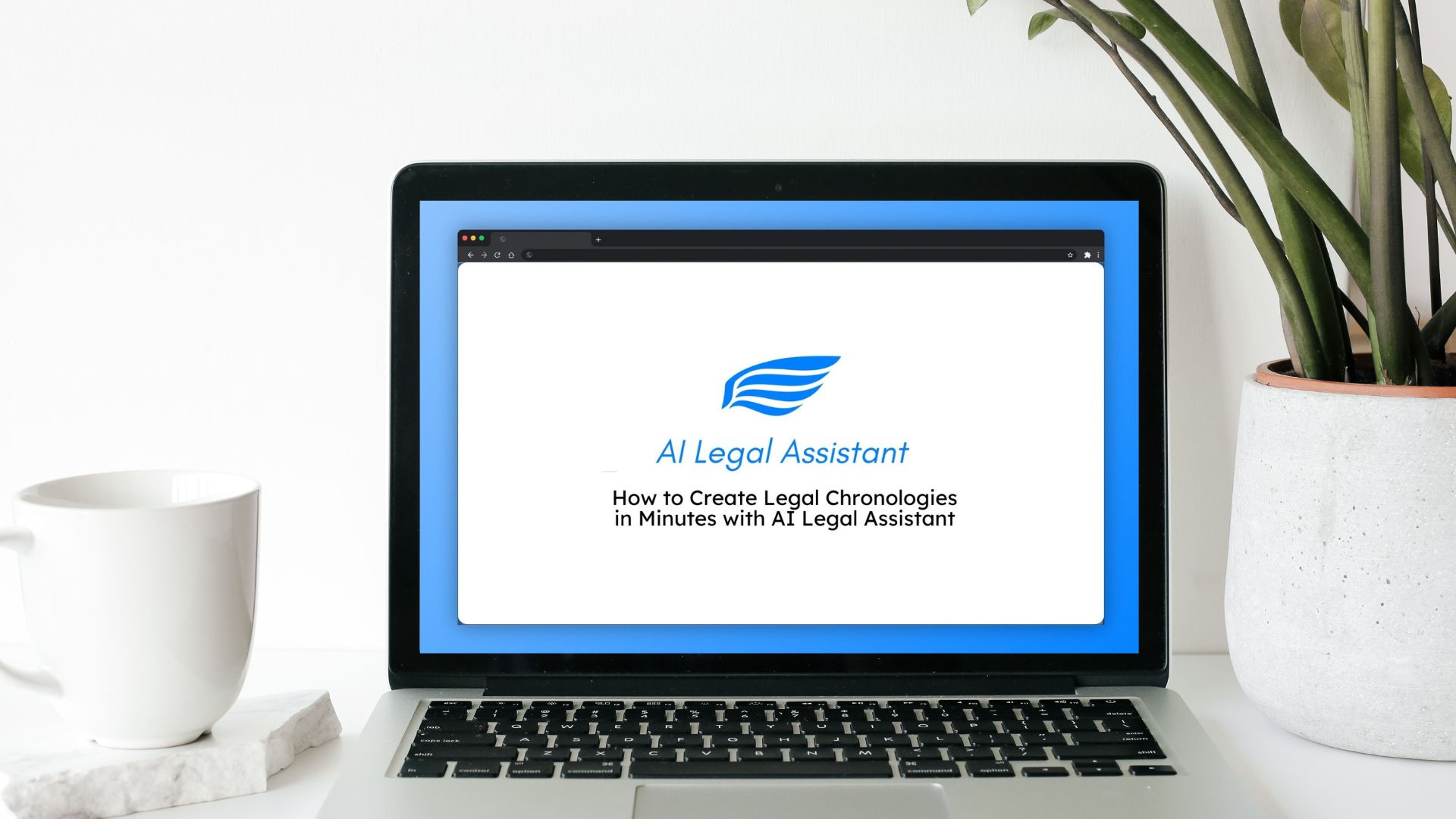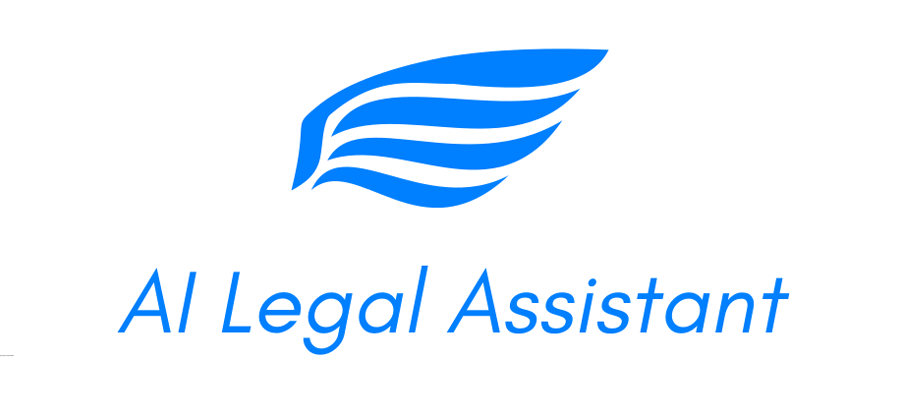
Transform your legal practice with automated chronology creation – save hours of manual document review
Legal practitioners know the tedious and time-consuming nature of creating chronologies from multiple documents. The traditional approach involves manually reviewing numerous files, extracting relevant dates and events, and organising them into a coherent timeline – a process that can take hours or even days to complete properly.
Enter AI Legal Assistant, an innovative solution that revolutionises how legal professionals handle document chronologies. This powerful tool eliminates the need to manually troll through extensive documentation, offering a streamlined approach that maintains accuracy while dramatically reducing the time investment required.
The challenge of managing multiple documents while creating accurate chronologies is a common pain point in legal practice. Whether you’re preparing for litigation, conducting due diligence, or reviewing case histories, the ability to quickly establish a clear timeline of events is crucial. Traditional methods not only consume valuable time but also risk human error in the sorting and organising of information.
AI Legal Assistant addresses these challenges head-on by providing what our users describe as “an amazing solution for you to simply upload all of your documents to a folder then click a button to have a full detaield chronolgy timeline created.” This straightforward approach marks the beginning of a transformed workflow that can turn hours of document review into a matter of minutes.
The significance of this advancement cannot be overstated in today’s fast-paced legal environment. As practices face increasing pressure to deliver efficient, cost-effective services, tools that can reliably automate time-intensive tasks become invaluable. AI Legal Assistant stands at the forefront of this technological revolution in legal practice management.
For legal professionals questioning whether there’s a better way to handle document chronologies, the answer is a resounding yes. The system’s ability to process multiple documents simultaneously while maintaining accuracy and detail represents a significant leap forward in legal technology. This introduction to AI Legal Assistant’s chronology capabilities is just the beginning of understanding how this tool can revolutionise your document management processes.
Getting Started with AI Legal Assistant
Uploading Documents
The journey to effortless chronology creation begins with a straightforward document upload process. As highlighted by users, you can “an amazing solution for you to simply upload all of your documents to a folder then click a button to have a full detailed chronolgy timeline created.” This intuitive first step sets the foundation for an efficient workflow that will transform how you handle document chronologies.
The platform’s user-friendly interface makes document organisation straightforward and logical. Whether you’re dealing with emails, contracts, court documents, or correspondence, all can be easily uploaded to a dedicated folder within the system. This centralised approach ensures that all relevant documents are readily accessible and properly organised before beginning the chronology creation process.
One of the key advantages of AI Legal Assistant’s document upload system is its flexibility in handling various file formats. Legal practitioners often work with documents in different formats, from PDFs, Word documents, images, audio and video files, and the platform accommodates this variety seamlessly. This eliminates the need for time-consuming file conversions or formatting adjustments before beginning the chronology creation process.
Generating the Chronology
Choosing Actions and Settings
Once the relevant documents have been selected, AI Legal Assistant provides a straightforward process for generating the chronology. As outlined in the platform instructions, users should “click on actions, unclick everything else and just select chronologies.” This focused approach ensures that the system concentrates solely on chronology creation, optimising the analysis process for this specific task.
The action selection interface has been designed with user efficiency in mind, offering clear options that guide legal practitioners through the chronology creation process. By unchecking other options and focusing solely on chronology generation, users can ensure the system dedicates its full analytical capabilities to this specific task.
Starting the Analysis
After configuring the desired settings, users simply need to “click on start chronology analysis.” What follows is a sophisticated analytical process where the system “goes and analyses every document individually and then puts all of the information into the correct chronological order and references all of the documents where it pulled the information from.”
This automated analysis represents a significant advancement in legal document processing. The system employs advanced algorithms to identify relevant dates, events, and information across all selected documents. It then organises this information chronologically while maintaining precise references to source documents – a crucial feature for maintaining accuracy and transparency in legal work.
The analysis phase is comprehensive yet rapid, examining multiple aspects of each document to extract pertinent information. The system identifies not just dates and events, but also relevant context, participants, and outcomes. This thorough approach ensures that the resulting chronology provides a complete picture of the matter’s timeline while maintaining the accuracy and detail required for legal work.
During the analysis process, the system also maintains document integrity by creating clear links between the chronology entries and their source documents. This feature is particularly valuable for verification purposes and allows legal practitioners to quickly reference original documents when needed.
What sets this analysis apart is its ability to handle complex document sets while maintaining accuracy and consistency. The system can process documents with varying formats, styles, and content types, ensuring that all relevant information is captured and properly organised in the final chronology. This capability significantly reduces the risk of human error and ensures a more comprehensive chronology than might be possible through manual methods.
The automation of this analysis phase represents one of the most significant time-saving aspects of AI Legal Assistant, transforming what would typically be hours of manual work into a matter of minutes. This efficiency gain allows legal practitioners to focus their expertise on analysis and strategy rather than mechanical document processing.
Reviewing the Generated Chronology
Viewing Options
Once the analysis is complete, AI Legal Assistant presents the chronology in a clear, professional format ready for review.
One of the most valuable features during the review phase is the ability to “click on show document links.” This functionality integrates direct references to source documents, enabling legal practitioners to immediately verify information and access supporting documentation. The inclusion of document links transforms the chronology from a simple timeline into an interactive legal reference tool, significantly enhancing its utility for case preparation and presentation.
Inserting the Chronology
After reviewing the generated chronology, users can seamlessly incorporate it into their working document. When you “click on ‘insert chronology’,” the system automatically formats and inserts the timeline.
The inserted chronology is structured in a logical and professional format, with each entry containing crucial elements that support legal analysis and presentation:
- Date and time stamps provide precise temporal reference points
- Event locations help establish the geographical context of activities
- Entity information clearly identifies all relevant parties
- Source references maintain clear links to supporting documentation
- Outcomes and follow-up notes provide valuable context about the consequences of each event
Exporting and Sharing the Chronology
Exporting Documents
Once your chronology is finalised and reviewed, AI Legal Assistant offers straightforward options for exporting and distributing your work. You can simply go up to file, export docx or PDF, additionally print as a PDF.
Sharing with Others
Collaboration is essential in legal practice, and AI Legal Assistant makes sharing chronologies seamless and secure. The platform features a dedicated sharing function where you can click on share and then allow public sharing. This generates a unique link that can be sent to colleagues, clients, or other stakeholders, with customisable permissions to either view or edit the chronology.
Sharing Entire Folders
For matters requiring comprehensive document access, AI Legal Assistant offers an enhanced sharing option. If you wanted to share the whole folder you can go back to the main folder and share a data room so that they have access to all of the documents within the folder including the chronology document. This feature essentially creates a secure virtual data room, providing controlled access to both the chronology and its supporting documentation.
This comprehensive approach to document sharing maintains security while facilitating collaboration, ensuring that all stakeholders can access the information they need within appropriate permission boundaries. The ability to share entire folders is particularly valuable for complex matters where context and supporting documentation are crucial for understanding the chronology.
The export and sharing capabilities of AI Legal Assistant demonstrate its design as a comprehensive solution for modern legal practice, where efficient collaboration and secure document sharing are as important as the document creation process itself. These features ensure that the time saved in creating chronologies isn’t lost in complicated export or sharing procedures.
Achieving Efficiency
The remarkable efficiency of AI Legal Assistant becomes immediately apparent when considering its practical application. As demonstrated in real-world usage, “we just created a chronology from 10 documents and shared it in 2 minutes.” This level of efficiency represents a paradigm shift in how legal practices can approach document analysis and chronology creation, dramatically reducing the time traditionally spent on these essential but time-consuming tasks.
Traditional methods of creating chronologies often involve hours or even days of careful document review, manual data entry, and meticulous cross-referencing. Legal professionals typically need to read through each document multiple times: first to understand the content, then to identify relevant dates and events, and finally to ensure all details are accurately captured in the chronology. This process is not only time-consuming but also prone to human error and oversight.
By contrast, AI Legal Assistant’s automated analysis and chronology generation capabilities transform this process into a streamlined operation. The system’s ability to simultaneously analyse multiple documents and extract relevant information with precision means that legal professionals can focus their expertise on reviewing and refining the generated chronology rather than spending countless hours on its initial creation.
The efficiency gains extend beyond mere time savings. By reducing the manual labour involved in chronology creation, legal professionals can allocate their valuable time to higher-value tasks such as strategic analysis, client consultation, and case preparation. This reallocation of resources can lead to improved service delivery and potentially increased profitability for legal practices.
Furthermore, the speed and accuracy of AI Legal Assistant’s chronology generation capabilities mean that updates and revisions can be made quickly as new documents become available. This agility is particularly valuable in active matters where the ability to maintain current and accurate chronologies can significantly impact case strategy and outcomes.
Additional Capabilities of AI Legal Assistant
While the creation of legal chronologies is a standout feature, AI Legal Assistant’s capabilities extend far beyond this single function. Indeed, “AI Legal Assistant is the top solution for getting chronology timelines done quickly and many other time-consuming tasks in a busy legal practice.” This comprehensive approach to legal document management and analysis makes it an invaluable tool for modern legal practices.
The platform’s sophisticated artificial intelligence engine can assist with various aspects of legal work that traditionally require significant manual effort. From document review and analysis to data extraction and organisation, AI Legal Assistant streamlines numerous time-intensive tasks that are essential to legal practice. This technological advancement represents a significant shift in how legal professionals can approach their daily workload.
By automating routine tasks, AI Legal Assistant enables legal practitioners to focus more on complex legal analysis and strategic decision-making. The system’s ability to quickly process and analyse large volumes of documents helps identify patterns, relationships, and key information that might otherwise take days or weeks to uncover through manual review.
The platform’s intuitive interface ensures that these powerful capabilities are accessible to all users, regardless of their technical expertise. This ease of use, combined with the system’s sophisticated functionality, makes it an ideal solution for legal practices looking to enhance their efficiency without sacrificing accuracy or quality.
Moreover, the platform’s capabilities continue to evolve and expand, reflecting the changing needs of legal practitioners and incorporating feedback from users. This commitment to continuous improvement ensures that AI Legal Assistant remains at the forefront of legal technology solutions, providing users with increasingly sophisticated tools to manage their practice more effectively.
The integration of these various capabilities into a single platform creates a cohesive ecosystem that supports legal professionals throughout their workflow. Whether working on complex litigation, corporate transactions, or routine legal matters, AI Legal Assistant provides the tools necessary to streamline processes and enhance productivity across all areas of legal practice.
Conclusion
The legal profession is continually evolving, and the introduction of AI-powered tools like AI Legal Assistant represents a significant step forward in modernising legal practice management. Through this innovative platform, the traditionally time-consuming task of creating legal chronologies has been transformed into a streamlined, efficient process. As demonstrated throughout this article, what once took hours or even days can now be accomplished in minutes.
The platform’s ability to analyse multiple documents simultaneously and automatically extract relevant information into a coherent chronological order represents a revolutionary advancement in legal document management. As highlighted earlier, “AI Legal Assistant is the top solution for getting chronology timelines done quickly and many other time-consuming tasks in a busy legal practice.” This capability alone can transform how legal professionals approach document review and chronology creation.
The practical benefits of this technology are clear – “we just created a chronology from 10 documents and shared it in 2 minutes.” This level of efficiency allows legal professionals to focus more time on strategic case management and client service, rather than being bogged down in administrative tasks. The platform’s user-friendly interface, combined with its powerful analytical capabilities, makes it an invaluable tool for modern legal practice.
For legal professionals interested in experiencing these benefits firsthand, the opportunity is readily available to “book a full demonstration to see how it will transform your practice.” This hands-on experience can provide a clear understanding of how AI Legal Assistant can be integrated into daily workflows and contribute to increased productivity and efficiency.
As the legal industry continues to embrace technological innovation, tools like AI Legal Assistant will become increasingly essential for maintaining competitive advantage and delivering efficient client service. The platform’s combination of powerful features, user-friendly interface, and affordable pricing makes it an attractive solution for legal practices of all sizes looking to modernise their operations and enhance their document management capabilities.









